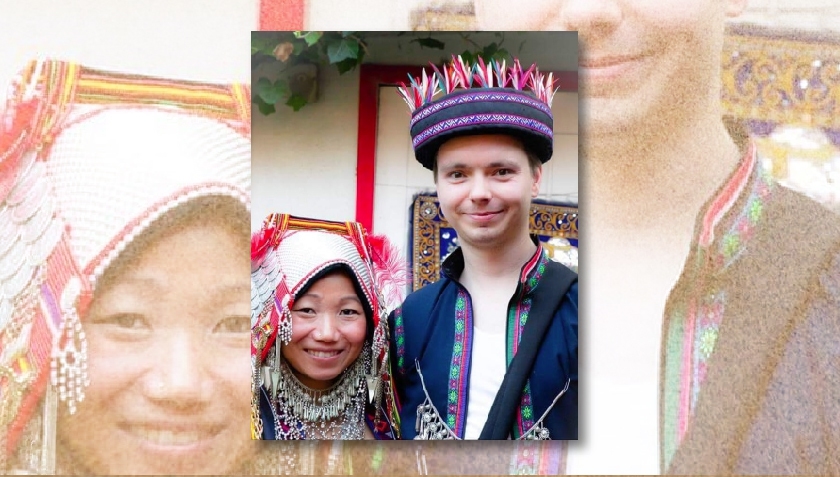
การประกอบสร้างภาพตัวตนของผู้หญิงอาข่าที่แต่งงานข้ามวัฒนธรรม
Constructing the Self-image of Akha Women in Cross-cultural Marriages
โดย ปรารถนา จันทรุพันธุ์ / By Pradhana Chantaruphan
Damrong Journal, Vol 18, No.1, 2019
บทคัดย่อ:
บทความชิ้นนี้ต้องการนำเสนอภาพตัวตนของผู้หญิงอาข่าที่แต่งงานกับชาวต่างชาติ และไปใช้ชีวิตในต่างแดนโดยใช้การวิเคราะห์เรื่องเล่าและการสัมภาษณ์เชิงลึกเป็นเครื่องมือในการวิจัย ผลการศึกษาพบว่า ปัจจัยสำคัญสองประการที่มีส่วนในการประกอบสร้างภาพตัวตนของผู้หญิง คือ อัตลักษณ์ทางชาติพันธุ์ หรือราก (root) ทางวัฒนธรรม และเส้นทางชีวิต (route) อัตลักษณ์ทางชาติพันธุ์เป็นทุนทางวัฒนธรรมที่สะสมในตัวและถูกหยิบออกมาใช้เมื่อข้ามแดนขณะที่เส้นทางชีวิตสร้างตัวตนใหม่ที่ทำให้หลุดจากการกดทับของอัตลักษณ์ทางชาติพันธุ์ แต่ก็มีภาพตัวตนบางส่วนที่ติดฝัง ดังนั้น ตัวตนข้ามวัฒนธรรมจึงเป็นตัวตนลูกผสม ไม่เป็นอันหนึ่งอันเดียว ยืดหยุ่นและต่อรองได้ เพราะมีความเป็นผู้กระทำการ ซึ่งไม่ติดกับวาทกรรมอัตลักษณ์ชาติพันธุ์ เป็นลักษณะของพลเมืองที่ยืดหยุ่นหรือตัวตนในกระแสโลกาภิวัตน์ที่ผู้กระทำการสามารถเลือกหยิบจับปรับใช้ตัวตนที่หลากหลาย ทั้งตัวตนในโลกชาติพันธุ์อันเป็นทุนเดิมที่ยึดโยงให้ผู้หญิงมีรากความสัมพันธ์กับครอบครัวเก่าและจินตนาการถึงต้นทางชีวิตที่จากมา และตัวตนสมัยใหม่ที่เกิดจากเส้นทางชีวิตในต่างแดนที่ช่วยให้ผู้หญิงมีเสรีภาพแบบที่ตัวตนผู้หญิงในวิถีอาข่าไม่สามารถมีได้
ABSTRACT:
The purpose of this article is to present the self-image of Akha women married to foreigners. This study used narrative analysis and indepth interviews as the research methodology. The study indicated that two important factors contributing to the self–image of women are their ethnic identity or cultural roots, and the route of life. Ethnic identity is a form of cumulative cultural capital and is used when crossing borders. As the route of life forms a new identity that breaks out from the pressures of ethnic identity, there are some embedded insights. Cross-cultural self is a hybrid identity, flexible and negotiable as an agency which is not attached to the ethnic identity discourse. It is a flexible citizen or globalized citizen who can choose to embrace a diversity of identities. One is the self that originates from ethnic capital that is rooted in women’s relationships with their former family, envisioning the source of life. The other is the modern self that emanates from the route of life in a foreign country that gives women the liberty which they could not have in the Akha world.











